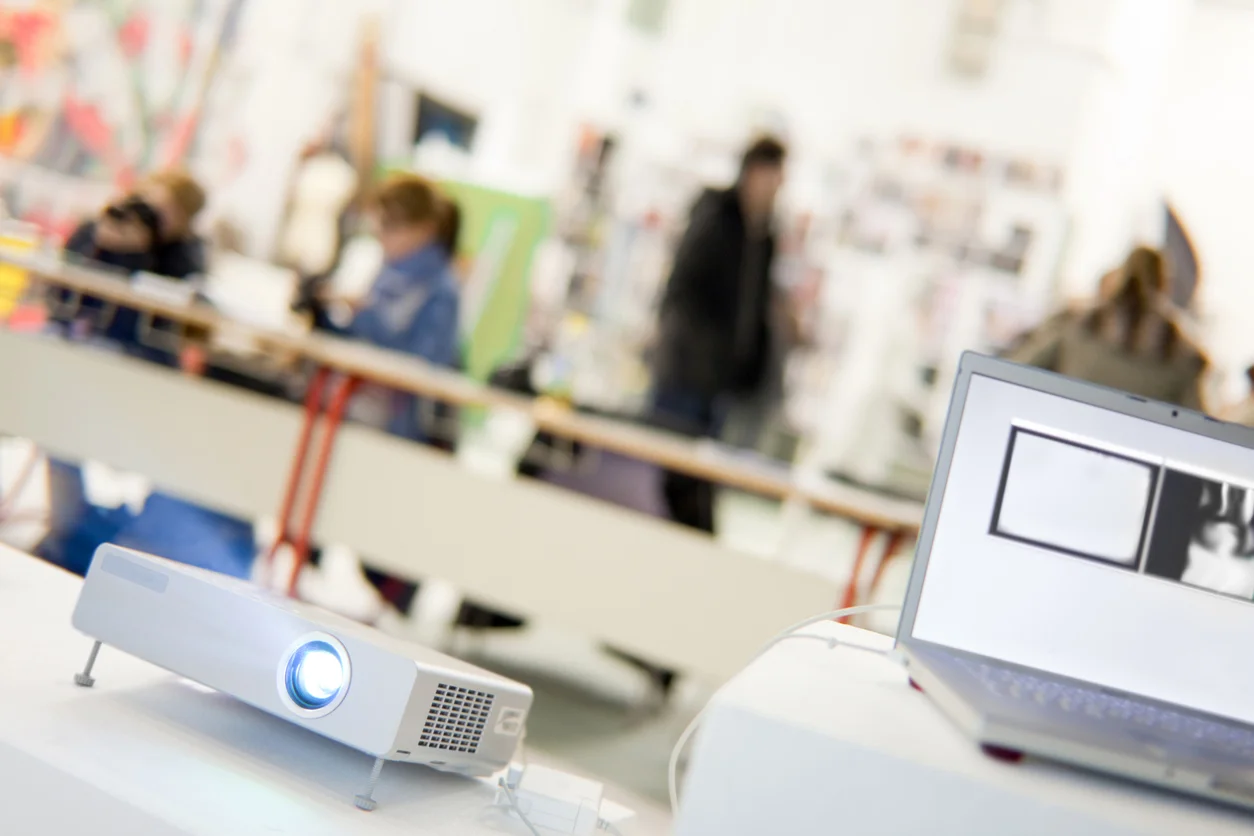As I prepared for an upcoming presentation at a local University I unloaded my test iPad of all its applications and created a new iPad, complete only with apps which I use at school every week. This iPad would become my "essentials" iPad, strategically and efficiently full of apps I wholly recommend to every educator I meet.
Your ICT roadmap for 2014
During the Christmas break my team and I conducted a thorough review and stock take of equipment, software and services at my school. It proved to be a very interesting exercise. What has been most revealing is the amount of young and often very expensive technology that is no longer being used. Our school, like many others, cast the net far and wide as we searched for a technology driven curriculum, and we now find ourselves casting off short-lived hardware and ideas. In hindsight we could have spent money more wisely but I like to think of my school as a modern place, on the cutting edge and prepared to take risks. We do make mistakes but risk taking creates a fertile environment where students and teaching staff have the opportunity to flourish. And they do.
By sharing our progress of the last few years and my plans for 2014, I hope to help schools that find themselves at the beginning of their digital journey.
It's not all about the technology
It's all about people and the community. Good infrastructure is vital but put your colleagues first and it becomes meaningful. Ask yourself these questions: Why do you want to leverage computers? What do you want your school to look like in three years? Is your journey a necessary one?
It’s the school’s duty to provide the tools and methods which teachers must have to teach effectively. In my day it was blackboard and chalk, today it’s a sound network and responsive internet access far all users. The modern classroom must have both, and this has been the focus of investment for my school in 2013.
Becoming independent in 2014
My school is part of the Catholic Education Network (CathEdNet), a state wide network connecting Catholic schools, the Catholic Education Office and related institutions in WA to each other and to/from the outside world.
Until recently, we have depended on Cathednet to provide internet connection via a proxy server (for threat management and protection of users), email services, short messaging services and telephony. However, as the school has developed and student/staff requirements grown, we have come to depend largely on third party/private providers for many services. The further we have progressed, the more independent we have become.
When Cathednet was launched in 2002, all schools were equal in their technical capabilities and funding. It was a level playing field and Cathednet did an exemplary job in supporting the progress of Catholic schools no matter how big, small, or remote. However, I think it fair to say that Cathednet can no longer keep up with the needs of its diverse schools.
The National School Computer Fund (NSSCF) funding was the catalyst to propel some schools away from the network. Modern curriculum demands had stretched the network to its limits and local admin teams required the flexibility to manage their own user requirements. The move away from Cathednet as an internet provider was one example of an independent movement, which is happening across the IT education sector.
A personal computer revolution
It became clear after the NSSCF funding that the ‘digital revolution’ is a personal computer revolution. Users want to manage their own experience, both offline and online; teachers have been encouraged to provide a personalised learning experience that caters for all learning types.
Association with your own computer is something that we can all relate to, and the trend does not stop with devices. Each teacher requires different needs in the classroom, each classroom requires particular wireless needs and each school must provide the digital tools it needs to meet the vision of its school leaders.
In 2013 staff required access to services which some deemed inappropriate for education, such as Facebook or Instagram. After a trail period we took the responsibility of protecting our students out of Cathednet’s hands, and into our own with Sophos Unified Threat Management (UTM). Managing your own proxy means greater granular control over our network and users. We can quickly ascertain which users consume our bandwidth and find out which sites they have been browsing.
Late last year I was very fortunate to win the support of my Finance Manager when I requested a 1 gigabit internet provider with Australia's Academic and Research Network (AARNet). Although very expensive this “internet pipe” is essential if we are to support our students in a cloud based future.
My recent article "Change Management, Moving from email to Gmail" described my reasoning behind my schools transition to Google Apps for Education. Many of my teaching colleagues also utilize entire learning platforms such as Schoology, Edmodo or iTunes U. It is clear to me that cloud computing is here, and in 2014 it will continue to flourish. Don’t allow yourself to be choked with a sub-par internet connection and proxy server.
As we progress through 2014, our internal storage servers will be reduced, pushing responsibility of data management to our users. Conversations have also begun with a sister school regarding the option to backup essential data, daily, and offsite.
Long term forecast costs have been reduced as I look to reduce dependency on our internal server and disaster recovery rooms. I foresee a future where a server room will be a server cupboard housing no more than core switches and a router.
Apple technologies
My school is moving into the future with one clear device requirement: the iPad is to be the primary tool for teaching and learning.
We will also provide five iMac suites and we have reconditioned dozens of MacBooks to ensure that we have at least five trolleys for classroom loan. We understand that those students who require the capabilities of a conventional desktop should be entitled to access the ‘Pro’ tools that they need. While the iPad is the focus tool, we are clear that the device should not and does not dictate the curriculum vision – the possibility of a BYOD (essentially dual device) environment also remains a consideration driven by the needs of our learners.
I feel compelled to address the concerns of Bruce Dixon. In Education Today magazine, Term 4 2013 he wrote that the iPad was “a dumbed down engagement device.” I understand his reservations about the iPad, I too was sceptical to begin with. I also share his opinion that “the corporate sector has found the Education Treasure Chest.”
We should not kid ourselves that for a moment that the goal of large corporations like Apple, Samsung, Google or Microsoft is not to make money for their shareholders, but much of Apple's success now depends on the success and greater good of education. Apple's approach to education has been genuine, their goals to transform education authentic. This has been the case since 1985 when Apple began the Apple Classrooms of Tomorrow (ACOT) research program. ACOT was a thorough review of technologies’ presence in education. It looked to stimulate new goals and alternative instructional approaches. Over the years since, I have witnessed how Apple tools have evolved to fit the requirements of learners and educators.
My school is committing to the iPad because our own research, conducted over four years, has shown that iOS removes the barriers and technical challenges faced by teaching staff. Our research has shown that student engagement levels have increased, differentiated instruction and self-directed learning have improved significantly.
Above all, the iPad puts the technical challenges of computers to the back and focuses solely on the task at hand, whether that be an English literacy task, rearranging a math formula or writing Japanese Kanji. The tool is unobtrusive, it is stable and is easy to manage from both a classroom management perspective and network management.
Advanced information technology (and learning how to use conventional computers for creative and technical tasks) is just as important as before, if not more so. I certainly hope that the future of my school will educate many new programmers, coders and digital creative experts.
What's in store for 2014?
I have put my neck on the line this year. Should things not work out with internet speeds, user data, and user protection, I can no longer look to Cathednet or Telstra to blame. The decisions I have made are necessary for the benefit of my school, but now the buck stops with me.
However, I can still sleep soundly at night (for now) because I am fortunate to work with 3 very talented I.T. professionals, and our goals are the same as the schools mission: to build the very best authentic learning community, that is rich in diverse opportunities founded on Catholic values.
I hope that you might be able to take a few ideas from my journey in 2013. Below is a summary of the projects and methods which I will focus on in 2014.
Wireless projection
In 2013 we started upgrading our classrooms with 70” flat panel monitors for wireless projection of iPads and laptops and I will look to continue this push throughout 2014. We did this because our teachers were not using the interactive component of the white board. The setup and preparation time also outweighed the educational outcomes of the task. [As a side note, if you require any free, old/used IWBs, please tweet me @DougLoader].
Self-management of student work
In 2012 and 2013 we upgraded our file server to provide many more terabytes of storage data. We quickly realised that if you provide it, it will be used and normally forgotten about. Now we are on Google Apps for Education, each student has their own 30 GB of storage. They fill it up and then they delete stuff; ultimately students and staff are responsible for managing their own data. In 2014 it’s important that users continue to take responsibility.
Parent funded devices
After much discussion we have found that parents are happy to provide devices for their children, effectively making computers a book list item. That said, we always support our parents and staff where necessary and equity of access always comes first.
Realtime collaboration
Working on just one document between users not only increases outcomes, it reduces both your digital footprint and carbon footprint… files are no longer emailed back and forth and printing is reduced. Check out Google docs or Office 365.
Relevant professional development
You must continue to provide time and expertise to PD in 2014. I like to pay particular attention to ‘beginners’, where the essentials are covered and all staff members have the confidence to present any question or problem, no matter how basic it may seem. It is important that no staff member should feel left behind or inadequate in their application of technology.
Good digital citizenship
There is much evidence of young people who have been the victims of Twitter, Snapchat or Ask.fm. Schools are only really beginning to understand the digital world in which many students are caught up.
For most young people these tools permit a type of popularity contest conducted in an online world… a stage where one is judged by friends and peers. And this digital space never stops.
Many schools throughout WA are finding themselves in a position where students are armed with modern devices that empower them to such an extent, that teachers are feeling a sense of helplessness. While it is our duty as educators to provide balance and guidance, ultimately the student must, from a young age, be able to exercise self control and responsibility. The student needs to fully understand what it means to be part of a connected world.







